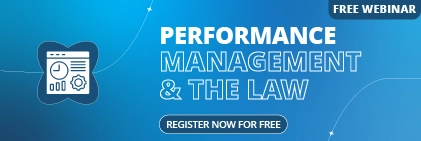Selecting the right candidate for an open role can be a difficult and stressful process, particularly given it is such a big investment. Consider the costs of failing to recruit the right employee:
- Turnover costs in Australia have been estimated by PwC at $3.8 billion, with an additional $385 million spent in avoidable recruitment costs.
- Employee disengagement costs in Australia have been estimated by Gallup to be $70billion annually with 76% of employees disengaged.
- The average cost for organisations that experience non-compliance problems arising from unethical employees has been estimated at $14.82 million.
All of these costs are a direct result of organisations failing to implement robust selection and onboarding processes. They don’t assess fit for the role, they don’t implement effective onboarding processes, and they certainly don’t provide the appropriate compliance training. Then they scratch their head and wonder why all their employees leave, don’t perform, and/or do the wrong thing!
The reality is we are not living in the 20th Century anymore, and we have evolved past the old technique of solely using interviews and reference checks to select the right candidate. There is also no excuse for starting an employee in a new role without providing them with initial onboarding and compliance training.
On a more positive note, it is easier than ever to optimise your selection process to ensure you put the right person in the right role, keep them there, and ensure they perform and do the right thing. By using leading People Analytics and Compliance software to inform your selection process, you not only make the process easier but also more accurate. The returns you receive from these tools far outweigh the potential costs they avoid. This article outlines important steps to finding the right candidate for a role.
- Step 1: Build a High-Performance Benchmark for the role. This enables you to identify the critical traits and attributes predictive of high performance.
- Step 2: Construct a job advertisement that attracts the right type of candidate. By using the aforementioned High-Performance Benchmark, you can receive a better understanding of what type of people you would like to attract from a cognitive and behavioural perspective. Work these attributes into a Position Description Template to make sure your advertisement targets the right candidates.
- Step 3: Screen candidates using Skills Assessments to assess whether they have the basic skills & knowledge to complete required tasks. These can be administered to hundreds of candidates at the click of a button and are based on Job Analyses, which identify the exact skills and knowledge required for each job role. By setting a minimum pass mark, you can prevent those who aren’t qualified from a technical point of view from progressing further, saving you time and money.
- Step 4: Conduct preliminary interviews, ensuring you keep to a strict structure and use the same questions across candidates where possible. Maintaining structure has been proven to improve the reliability of using interviews as a selection method. Select those who provide the best responses for the next stage.
- Step 5: Use Psychometric Assessments such as Profiles to assess your leading candidates and their fit to the position in question. Selection Reports provide unbiased, deep insights into the candidates’ traits using statistical and psychological methods based on science and best practise. It will indicate where their strengths are, any areas of concern, and how they sit relative to proven high performers. It will also assess whether they will be engaged and motivated in the role, which is crucial if they are to stay with the organisation long-term.
- Step 6: Conduct a second interview using the results of the Psychometric assessments as a guide. Use this as a final source of information prior to the job offer.
- Step 7: Ensure employees are taken through an onboarding process. Use results reports such as the Coaching Report from the Profiles psychometric assessment to inform employee development better. This will ensure your onboarding is targeted, effective, and considers each employee’s behavioural traits and cognitive styles.
- Step 8: Provide compliance training during onboarding to ensure your employees have a strong ethical compass and know right from wrong. Platforms such as Sentrient provide a cost-effective, efficient way to get your employees up to speed at a fraction of the cost and time it would take using traditional methods.
By following these steps, you can ensure your selection process is robust, thorough, and backed by measurement and data rather than bias and opinion. You will also ensure new employees receive the appropriate onboarding and compliance training they need to integrate within the organisation effectively. The end result will be a higher performing, engaged workplace, a more ethically driven organisation, and a significant reduction in turnover rates.





